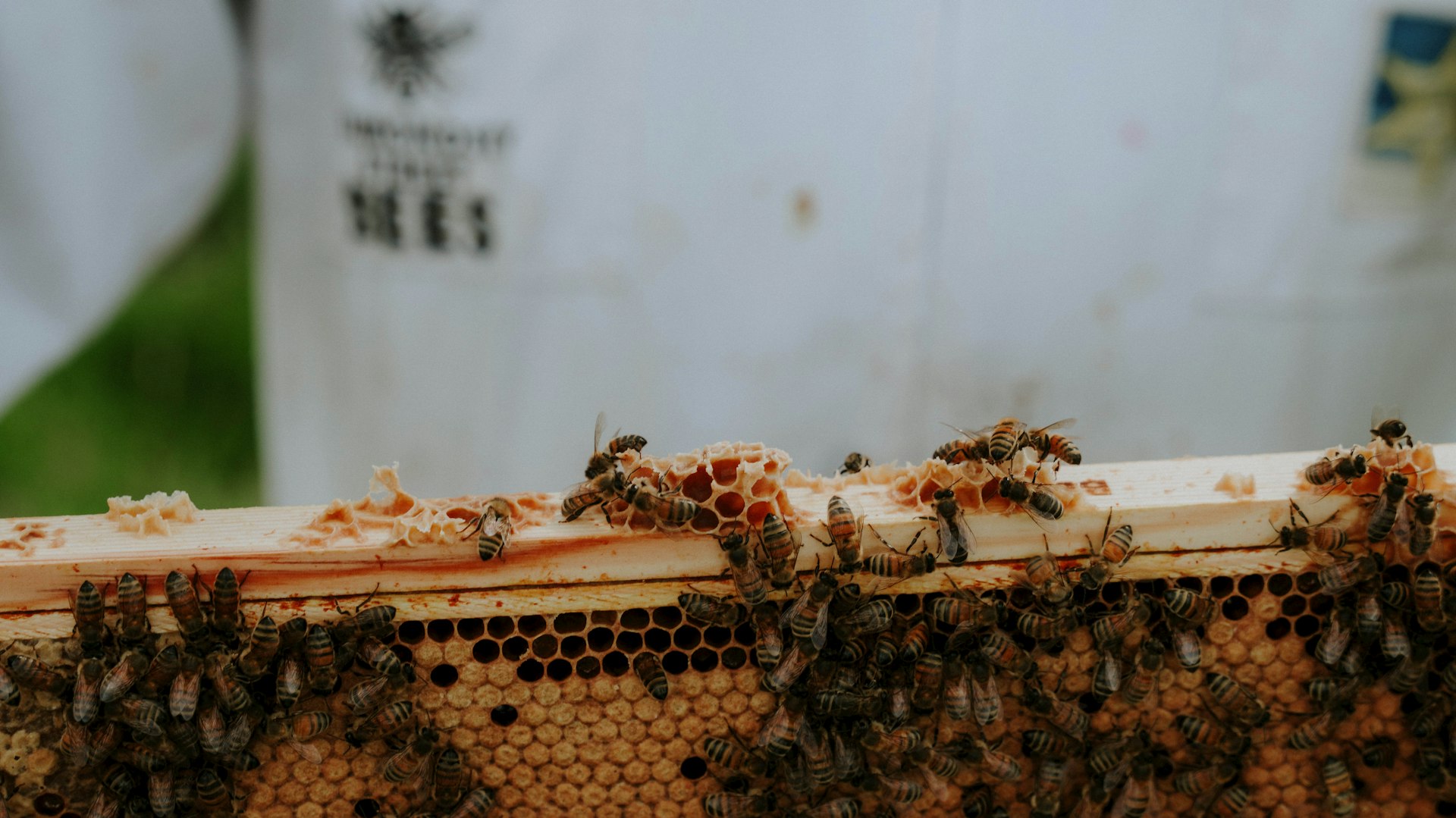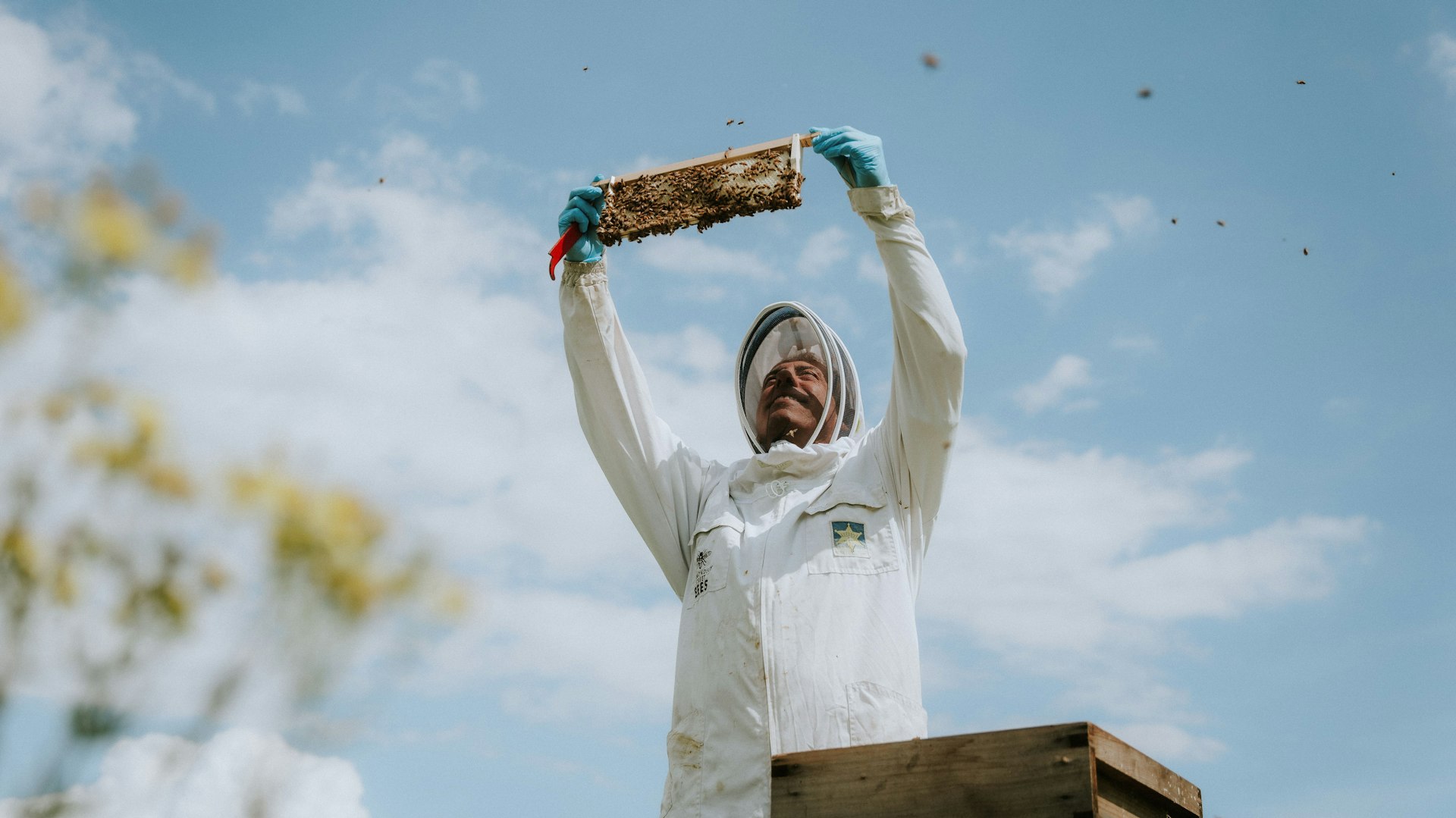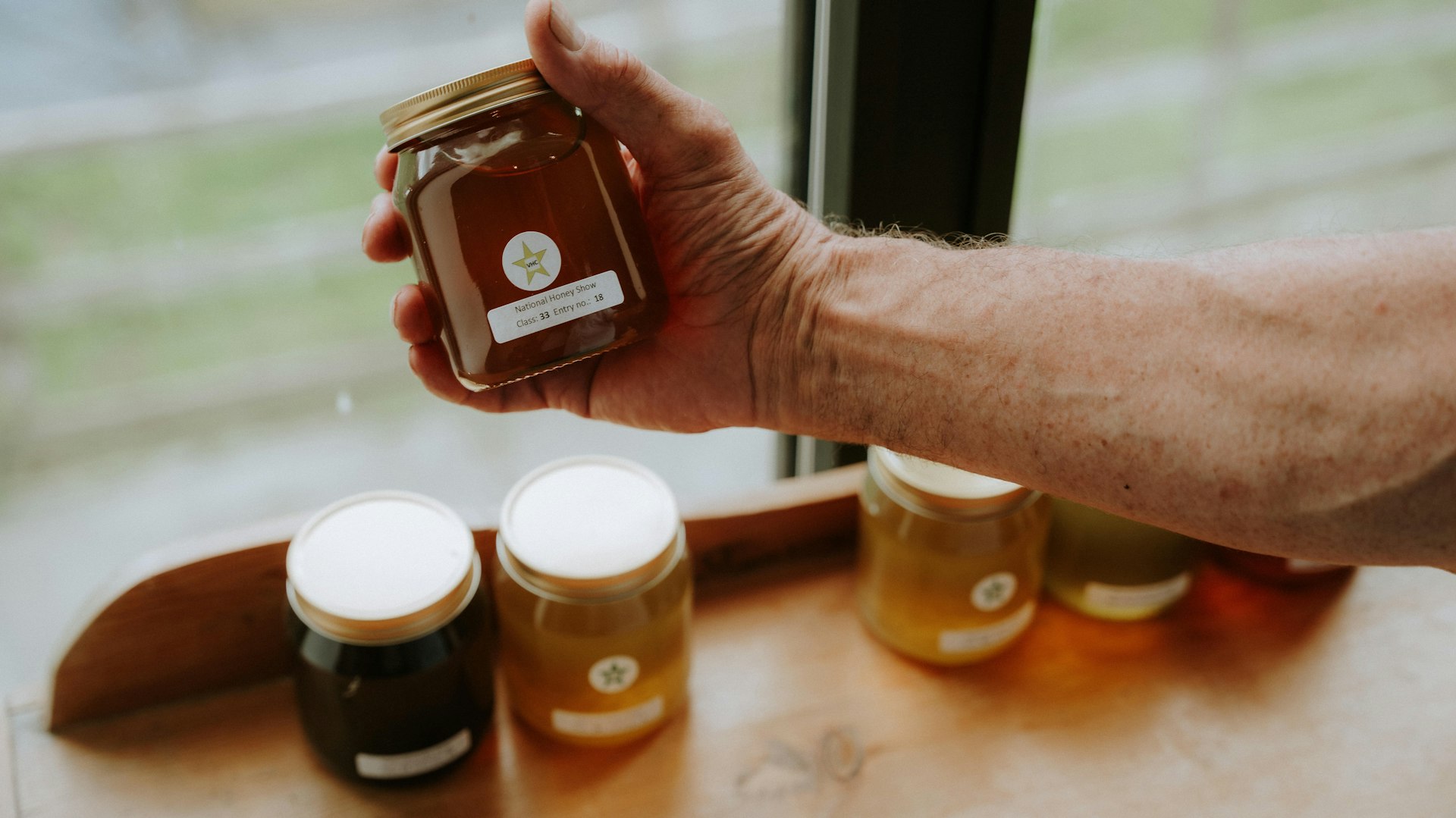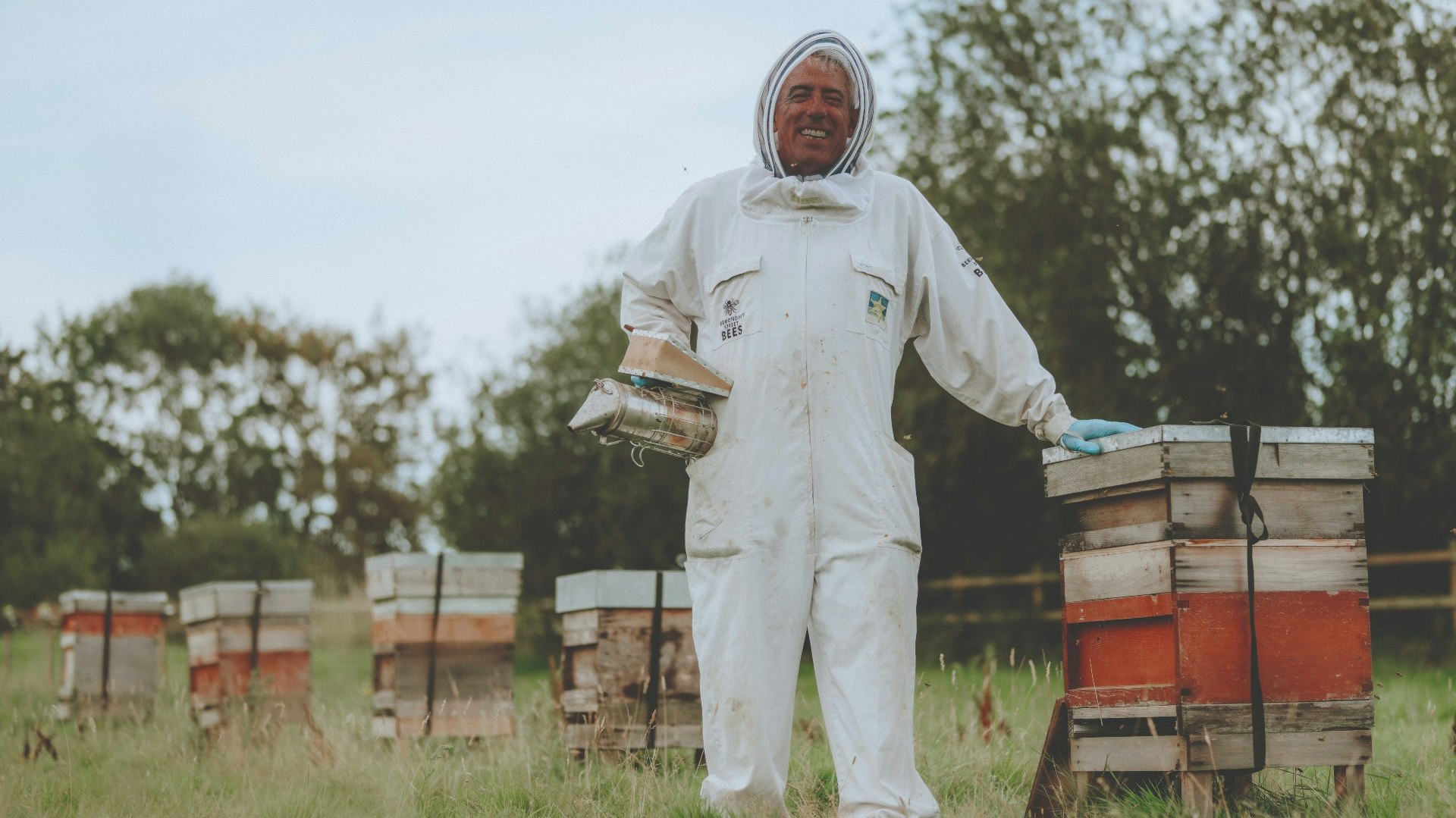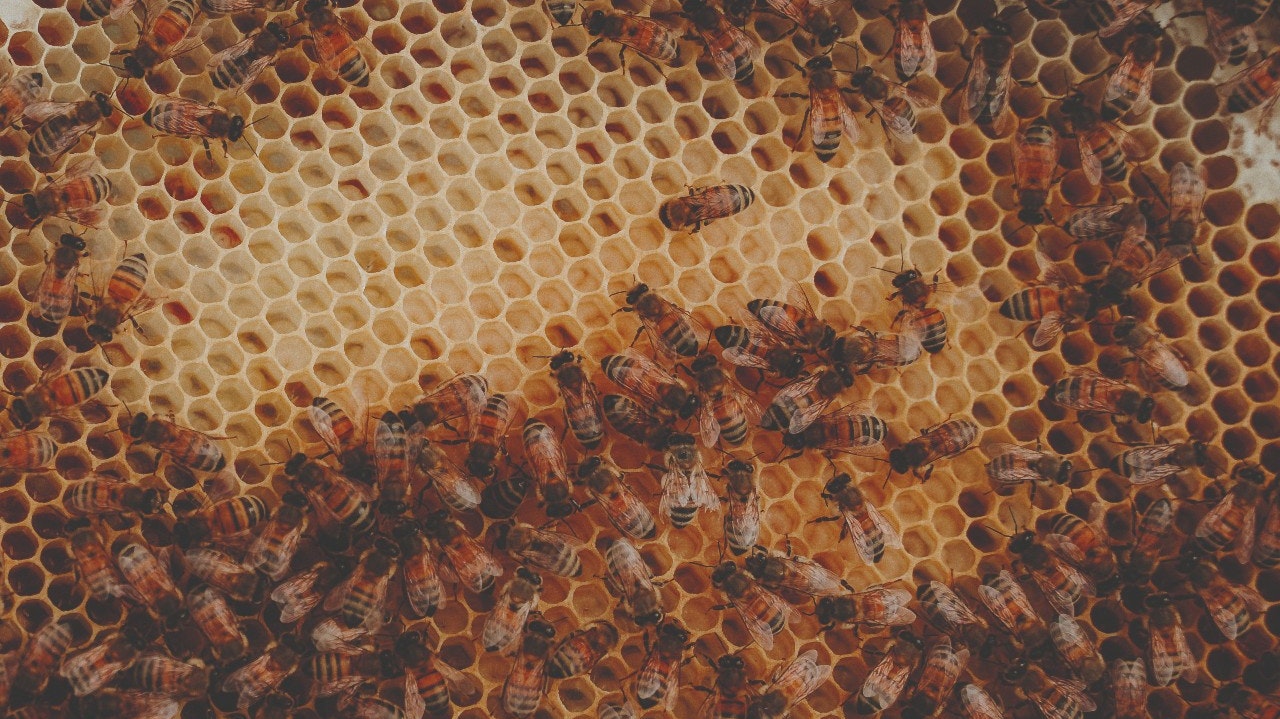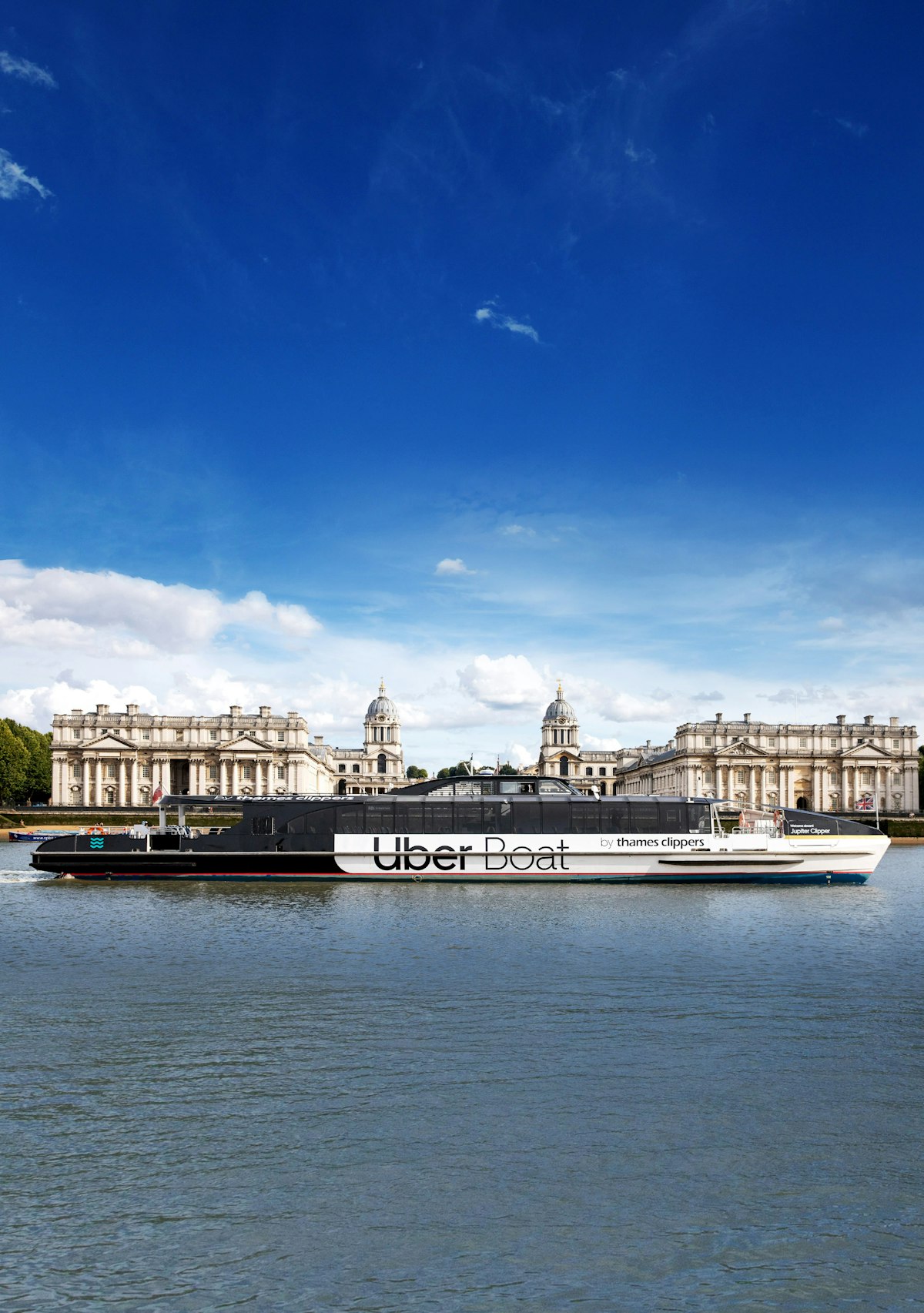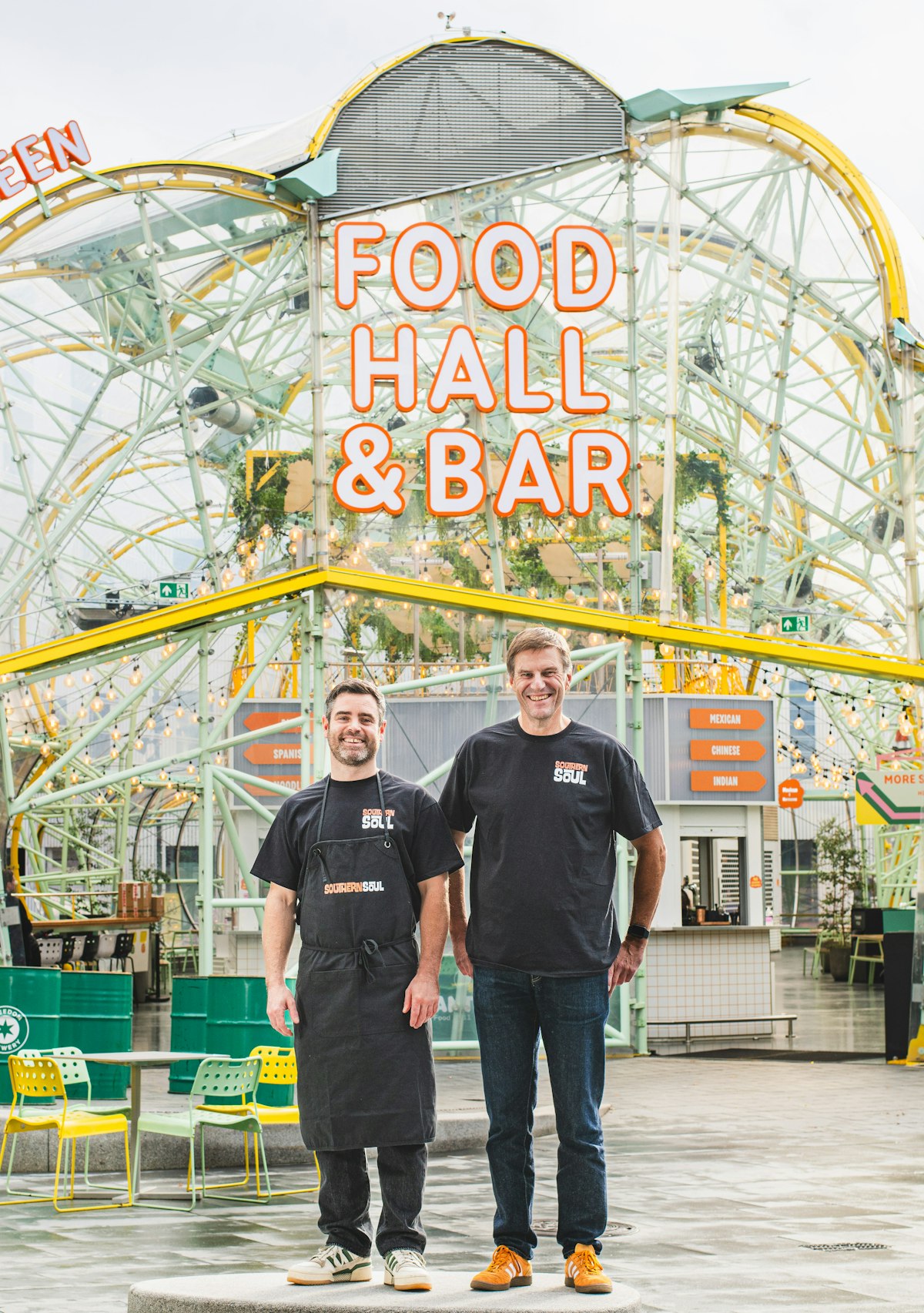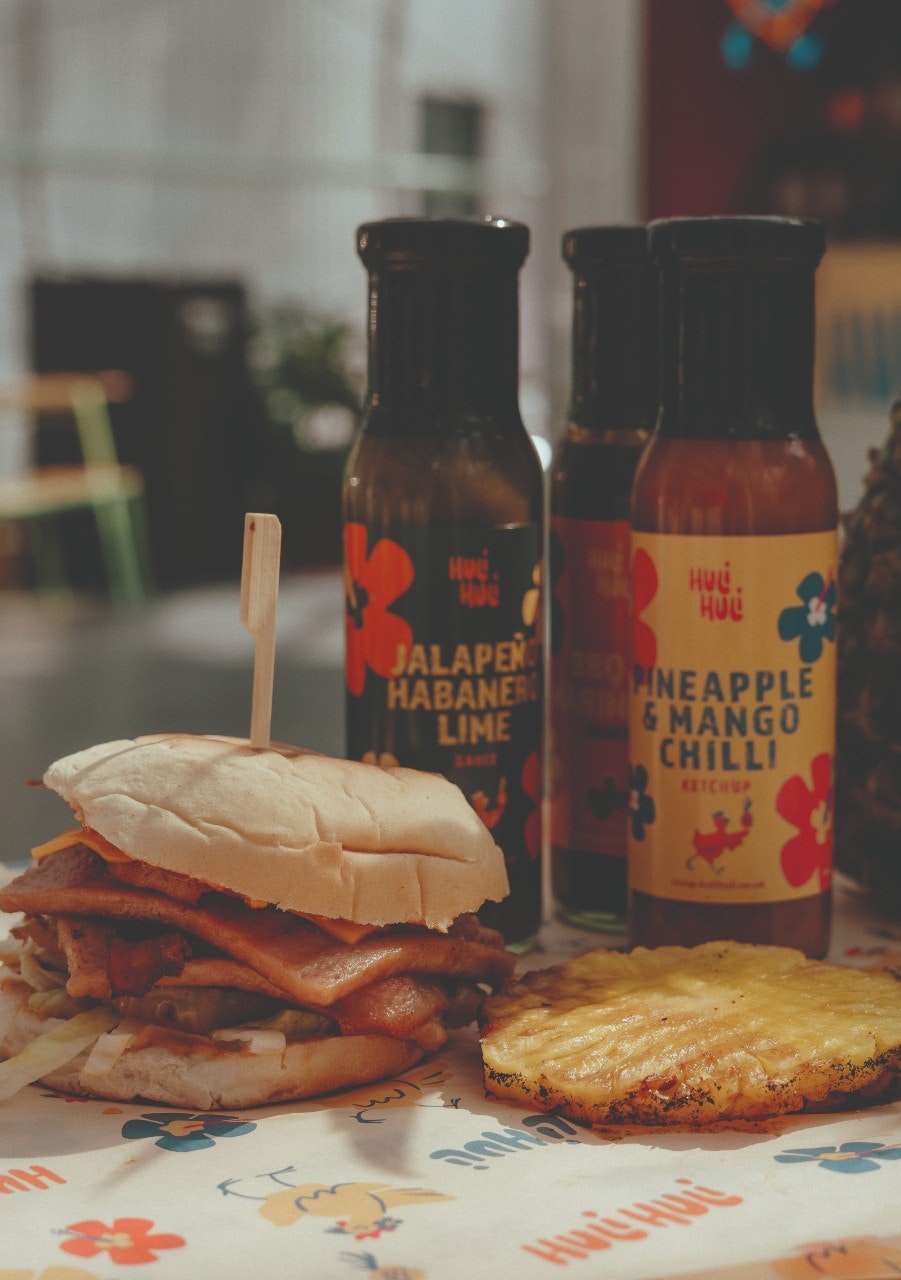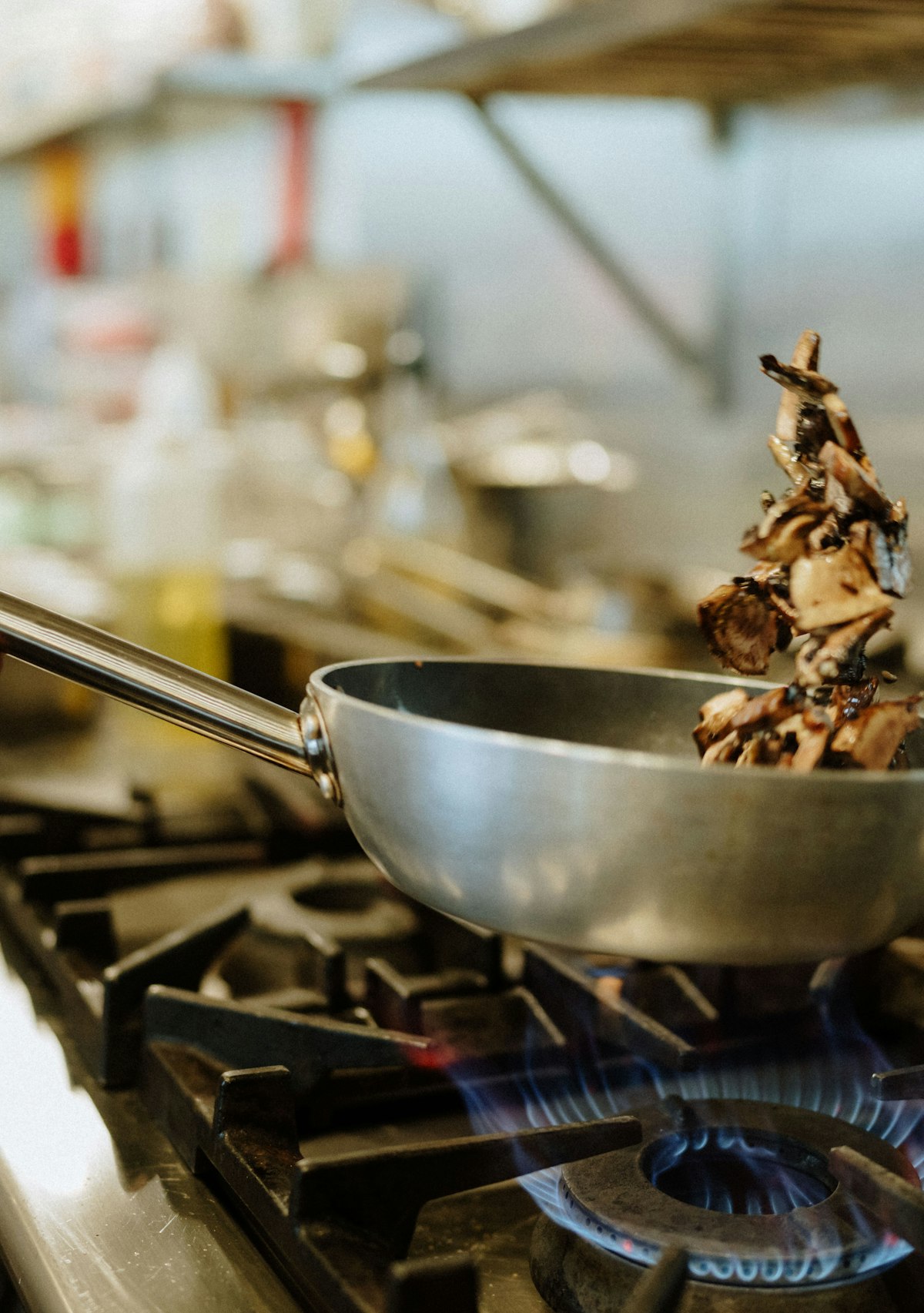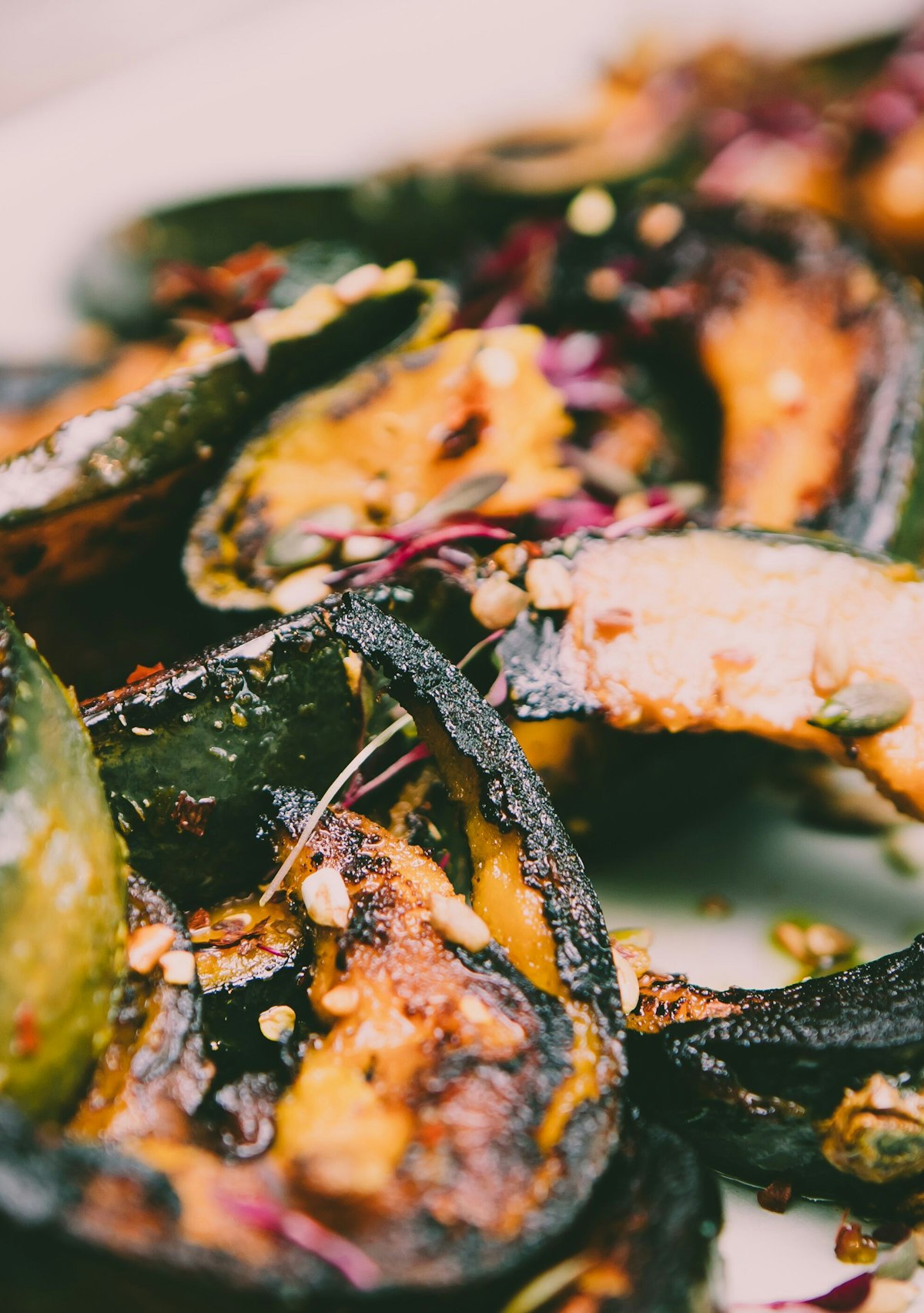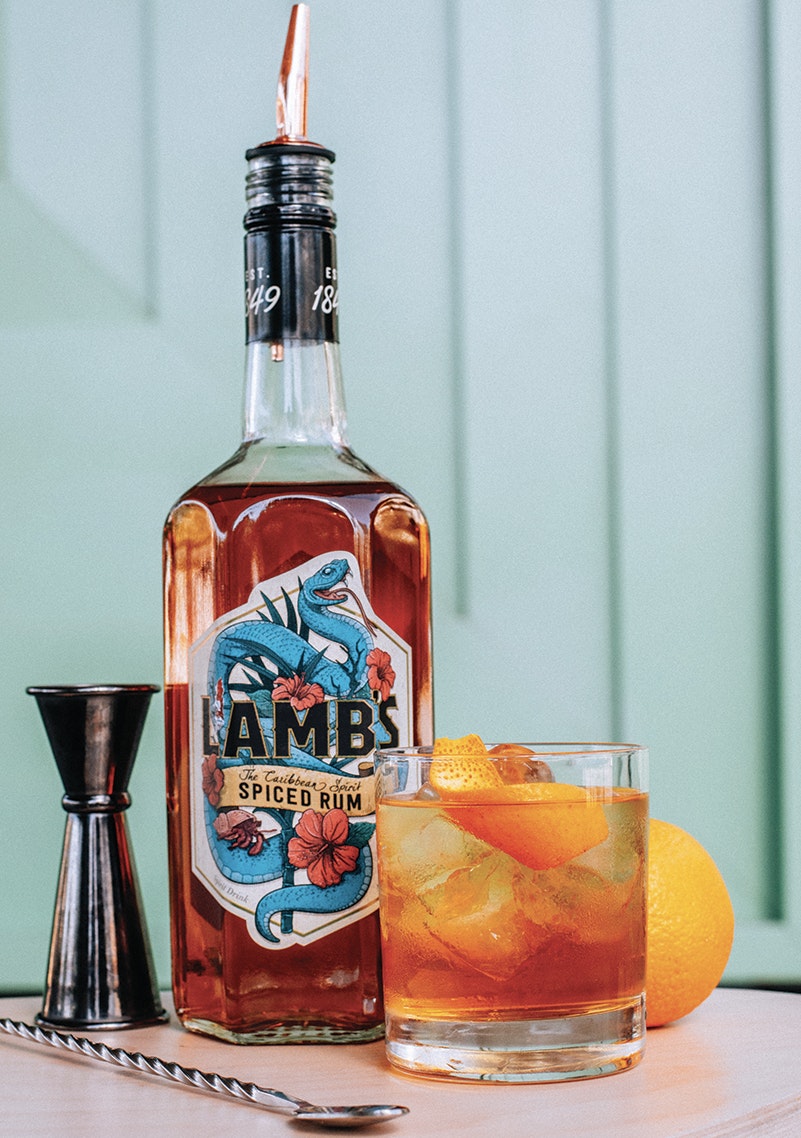
Hive Mind
"Honey is like fine wine: it has terroir*" says Dale Gibson, founder of Bermondsey Street Bees and keeper of Greenwich Peninsula’s own hives. Choose a single-origin, unblended honey and you’ll find a reflection of place and time. “The quality of the product varies depending on weather patterns, the health of the bees, the health of the plants – everything plays a role.”
The Peninsula’s honey is a micro-local product from just three hives that sit between the Blackwall roundabout and Central Park. It is, says Dale, a perfect spot for honeybees, with the local nature park on their doorstep and the Thames Estuary beyond. “They tend to do well here,” he says. “Estuaries are very good for bees: the salt marshes have lots of inconspicuous flowering things, which give them a small dose of salt.” That little edge of salt gives the honey the kind of moreish flavour balance you find in salted caramel.
Bermondsey Street Bees began as a passion project when Dale and his wife, writer and honey sommelier Sarah Wyndham Lewis, started keeping bees on the roof of their south London house. It was, he says, an experiment in urban farming and a way to feel more connected to nature, even in the heart of the city. “I was fortunate to get an allotment in Southwark, half a mile from the house in Bermondsey Street. And in my first year there I started thinking about bees collecting nectar from the things I was growing on the allotment. It could be a connection between the house, my allotment and me.”
It’s not a quick process to become a beekeeper, and you can’t just plonk down a hive and hope for the best. “I took a slow burn approach,” says Dale. “I did some taster sessions with the local beekeeper association, then did a year’s training with a mentor to learn as much as possible about the biology of bees and the seasonality of animal life. I learnt about hive types and locations, plants and pollination. It’s a very slow process, because if you try to guess at these things, you’re bound to get some of them wrong. And it’s not like a computer game – you can’t just reset if it goes wrong. You have one chance a year, and if you get it wrong the hive dies.”
The business only became a full-time endeavour in 2016, when they won Gold at the Great Taste Awards, and were commissioned by Tom Aiken to design and install an holistic apiary system for Soho Farmhouse. That was the moment they took the leap from animated hobbyists to professional beekeepers and consultants. The business now spans a huge range of activities, from corporate events to apicultural consultancy, as well as tending to hives across London.
Keeping bees forces you to look at the world differently, says Dale, and success comes from letting bees run the show. “Bees have been around for 88 million years. I’ve been keeping bees for 17 years. We let them tell us what to do, and create ways to do that in accordance with their wishes. There’s the spirit of listening to what they want to do.” This sense of following the bees’ lead underpins their entire approach to sustainable beekeeping.
In recent year’s Dale’s focus on sustainability and raising awareness of ethical honey production has intensified. “For us, sustainable means we put the welfare of bees first, not honey production or profit or human comfort.” Rather counterintuitively, this has seen Dale taking hives out of London. Since 2020, the company has reduced the number of honeybees they keep in London by 30%, and will continue to reduce them by 5% each year from now on. “The bees were not thriving in London,” says Dale. “And we looked at the data – a combination of our own records and government databases – and tried to work out why.”
While a single bad year for bees could be due to a weather hiccup, or a passing disease, the general trend of decline in London’s beehives suggested there was a bigger problem: overpopulation. “London is the most densely populated city in Europe for bees. So we now assume that central London has no ability to sustain incremental beehives.”
“For us, sustainable means we put the welfare of bees first, not honey production or profit or human comfort.”
Overpopulation is not just bad for the honeybees themselves, but also for wild pollinators such as bumblebees, moths, butterflies and other insects. Honeybees are extremely efficient and wide-ranging foragers – they’re not picky about where they get their nectar. So when the population is too dense, you see declines in wild insect populations. It’s a careful balance to strike.
One way to improve life for all pollinators is to focus on planting the right things in the right places. This has become the main focus of Bermondsey Street Bees’ consultancy work with corporate clients and councils. The first enquiry is often about putting hives on a roof, or in a local park. But Dale is quick to divert the conversation to planting for pollinators instead. Dale has worked on large-scale projects with Southwark Council transforming neglected strips of green space into habitats that serve pollinators. He secured funding to improve the planting of St Mary Magdalen Churchyard at the bottom of Bermondsey Street, as well as to create a drought-tolerant garden in Guy Street Park, following the advice in his wife Sarah Wyndham Lewis’s book “Planting For Honeybees”.
Here on the Peninsula, there’s plenty of forage for the local bees to be getting on with. The three hives produce about double the national average amount of honey each year: in 2022, they made 22kg. The next time you take a stroll through Central Park, take a moment to notice the bees and take in the terroir. They’ll be all abuzz making next year’s vintage.
terroir: the combination of factors including soil, climate, and sunlight that gives wine grapes their distinctive character
Make a buzz
Planting for pollinators works at any scale, in whatever space you have. That might be a window box, a small garden, or a little patch under a tree on your local street. Here are some tips from Dale on working with what you have.
Plant herbs and shrubs
Only got a window box? Plant it with herbs: rosemary and oregano are especially good for bees, plus your next roast veg will taste incredible. If you’ve got a bit more space, shrubs are excellent – not just for pollinators, but as nesting space and cover for birds too. Herbs and shrubs are low-maintenance, high-reward planting for everyone.
Avoid wildflowers
By all means throw a wildflower seed bomb at your local roundabout if it’s going to make you feel good, says Dale, but wildflowers are hard work. The flowering period is relatively short, so for most of the year you have bare earth. And without annual mowing and close management, your wildflower meadow will be back to grass within two years.
Let the bees roam free
Those cute bee houses that make ‘perfect gifts’? Don’t do it. Firstly, most wild bees are solitary, so they’re not going to think much of your hotel. Then there’s the issue of construction: bee houses are often badly made from the wrong materials, and are rarely the right width or length. There’s no way to clean them effectively. Worst of all, they often create condensation – the one thing that bees really can’t tolerate.
Think like a bee
There are few things more rewarding than watching a bumblebee working its way through the herbs and shrubs you’ve planted. Get up close, look for the little pollen baskets on their back legs. Notice how they make their way from plant to plant, then zoom off on more important business.
Images by Kris Humphreys Photography

